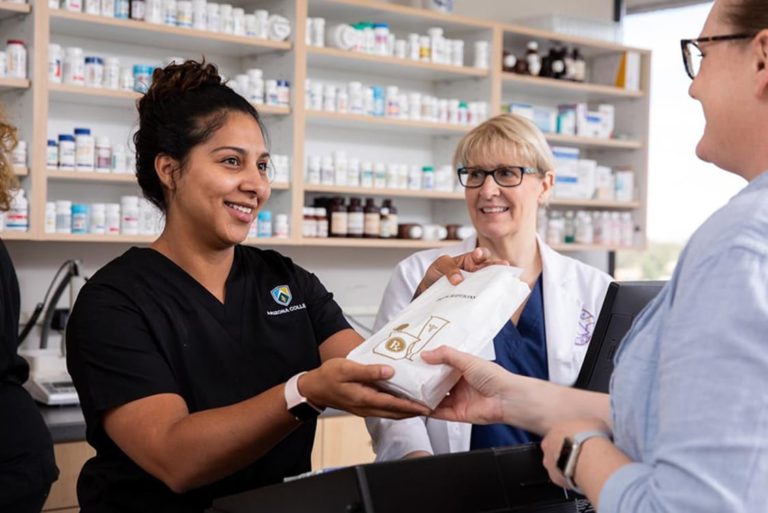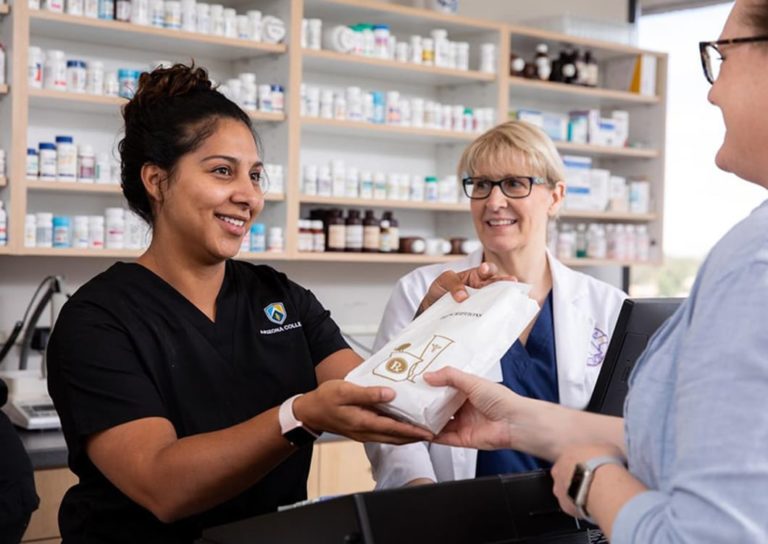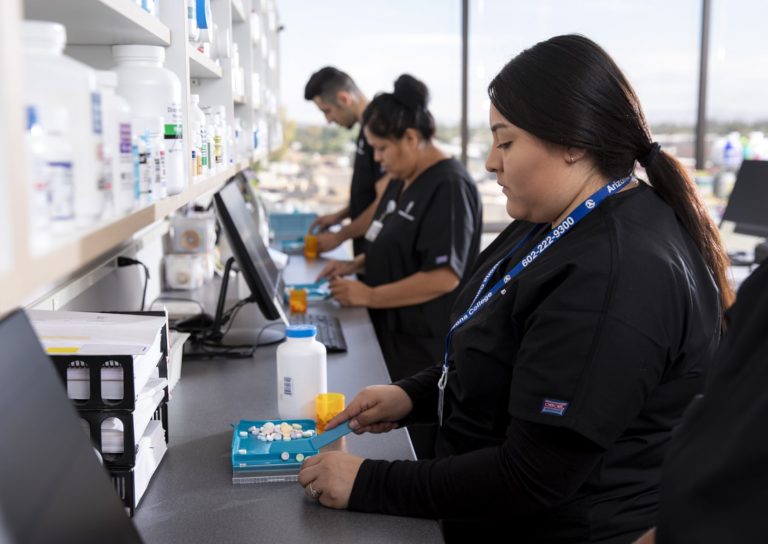Discover a Meaningful Career as a Pharmacy Technician
Whether you’re considering a career as a pharmacy technician or already working in the field, understanding these terms is crucial. By mastering the vocabulary specific to pharmacy practice, you gain a strong foundation that enables effective communication with healthcare professionals, patients, and pharmacists. This proficiency allows you to navigate the complex world of medications, prescriptions, and pharmaceuticals with confidence. By immersing yourself in these essential terms, you unlock the power to provide safe and efficient pharmaceutical care, contribute to patient well-being, and establish yourself as a valuable member of the healthcare team.
Frequently Asked Questions Relating To A Career As A Pharmacy Technician
The basic prerequisite for a pharmacy technician is a high school diploma or equivalent. Most states and employers also require certification through an accredited program.
Pharmacy Technicians are responsible for receiving prescription requests, counting medications, maintaining patient records, and assisting the pharmacist with other tasks as needed.
The challenges can vary depending on the specific job and setting, but common challenges include managing a high volume of tasks, dealing with insurance issues, and ensuring accuracy under pressure.
The career path typically involves obtaining a high school diploma or equivalent, completing a pharmacy technician program or gaining experience through on-the-job training, and obtaining certification.
Pharmacy Technicians often work in fast-paced environments and must manage multiple tasks at once. They may also need to interact with patients, healthcare providers, and insurance companies.
General Terms
Compounding: The creation of a particular pharmaceutical product, that is not commercially manufactured, to fit the unique need of a patient.
Controlled Substance: A drug or chemical whose manufacture, possession, or use is regulated by the US government, such as illicitly used drugs or prescription medications that are designated by law.
DEA Number: A number assigned to a health care provider (such as a physician, optometrist, dentist, or veterinarian) by the United States Drug Enforcement Administration allowing them to write prescriptions for controlled substances.
Dosage Form: The physical form of a dose of a chemical compound used as a drug or medication intended for administration or consumption.
Drug Interaction: A situation in which a substance affects the activity of a drug when both are administered together.
Medication Therapy Management (MTM): A service or group of services that optimize therapeutic outcomes for individual patients.
Over-the-Counter (OTC) Medication: Drugs that are safe and effective for use by the general public without a doctor’s prescription.
Pharmaceutics: The discipline of pharmacy that deals with the process of turning a new chemical entity (NCE) or old drugs into a medication to be used safely and effectively by patients.
Pharmacist: A healthcare professional who is a medication expert and is involved in all aspects of medicine delivery to patients.
Pharmacology: The branch of medicine and biology concerned with the study of drug action.
Pharmacy Benefit Manager (PBM): Third-party administrators of prescription drug programs for commercial health plans, self-insured employer plans, Medicaid/Medicare Part D plans, the Federal Employees Health Benefits Program, and state government employee plans.
Pharmacy Informatics: The scientific field that focuses on medication-related data and knowledge within the continuum of healthcare systems – including its acquisition, storage, analysis, use and dissemination – in the delivery of optimal medication-related patient care and health outcomes.
Pharmacy Technician: A healthcare provider who performs pharmacy-related functions, generally working under the direct supervision of a licensed pharmacist.
Pharmacy: The place where most pharmacists practice the profession of pharmacy. It is the community pharmacy where the dichotomy of the profession exists—health professionals who are also retailers.
Prescription: A health-care program implemented by a physician or other qualified health care practitioner in the form of instructions that govern the plan of care for an individual patient.

Pharmacy Technician Tools and Equipment
As a pharmacy technician, understanding the terminology associated with these tools is vital for seamless communication, efficient workflow, and ensuring the accurate dispensing of medications. By familiarizing yourself with the terminology surrounding pharmacy instruments and equipment, you gain the confidence to navigate through various pharmaceutical tasks, collaborate effectively with pharmacists, and provide optimal care to patients.
Automated Compounding Systems: Electronic devices used to prepare sterile solutions for intravenous (IV) use and non-sterile compounds.
Automated Dispensing Cabinets: Computerized drug storage devices or systems that allow medications to be stored and dispensed near the point of care while controlling and tracking drug distribution.
Barcode Scanners: Devices used to read barcodes on medication packaging, aiding in accuracy and efficiency.
Cleanrooms and Laminar Airflow Hoods: Controlled environments used to prepare sterile products, such as IV medications.
Compounding Tools: Various tools such as spatulas, mortar and pestle, ointment slabs, etc., used to combine and alter ingredients to create a medication tailored to the needs of an individual patient.
Drug Reference Guides: Books or software used to look up information about various medications.
Electronic Health Record (EHR) Systems: Digital systems for collecting, storing, and using patient health information.
Electronic Prescribing Systems: Software that allows healthcare providers to send prescriptions directly to pharmacies electronically.
Label Printers: Devices used to print labels for medication packaging.
Medication Carts: Mobile carts with drawers and compartments used to store and transport medications and supplies.
Personal Protective Equipment (PPE): Safety barriers used to protect the skin, clothing, mucous membranes, and airways from infectious agents.
Pharmacy Management System: Software that helps to streamline pharmacy workflow, manage inventory, and enhance patient care.
Pill Counting Tray: A tool used to count or measure amounts of medication.
Pill Crusher or Splitter: Tools used to crush or split pills.
Refrigerators and Freezers: Used to store medications that require cold storage.

Common Acronyms
As a pharmacy technician, being well-versed in these acronyms is crucial for effective communication, streamlined workflows, and accurate documentation. Understanding the terminology behind these abbreviations allows you to navigate through prescriptions, medication labels, and healthcare records with confidence, ensuring patient safety and adherence to industry standards. By familiarizing yourself with these acronyms, you gain the knowledge to communicate seamlessly with pharmacists, healthcare professionals, and patients, while also staying updated with the latest advancements in pharmacy practice.
CPhT: Certified Pharmacy Technician – A designation given to a pharmacy technician who has passed an national exam and met certain qualifications proving their knowledge and skills in the field.
DEA: Drug Enforcement Administration – The U.S. federal law enforcement agency tasked with combating drug trafficking and distribution.
FDA: Food and Drug Administration – The federal agency responsible for protecting public health by ensuring the safety, efficacy, and security of drugs, biological products, and medical devices.
HIPAA: Health Insurance Portability and Accountability Act – A U.S. law designed to provide privacy standards to protect patients’ medical records and other health information.
IV: Intravenous – Administered into a vein.
MTM: Medication Therapy Management – A service or group of services that optimize therapeutic outcomes for individual patients.
NDC: National Drug Code – A unique product identifier for human drugs in the United States.
NHA: National Healthcareer Association – Another organization that certifies pharmacy technicians.
OTC: Over-The-Counter – Refers to medicines that you can buy without a prescription.
PBM: Pharmacy Benefit Manager – Third-party administrators of prescription drug programs for commercial health plans, self-insured employer plans, Medicare Part D plans, the Federal Employees Health Benefits Program, and state government employee plans.
PO: Per Os (by mouth) – Taken orally.
PRN: Pro Re Nata (as needed) – Medication that is taken as needed.
PTCB: Pharmacy Technician Certification Board – The organization that certifies pharmacy technicians.
QID: Quater In Die (four times a day) – Medication that is taken four times a day.
Rx: Prescription – An instruction written by a medical practitioner that authorizes a patient to be provided a medicine or treatment.



